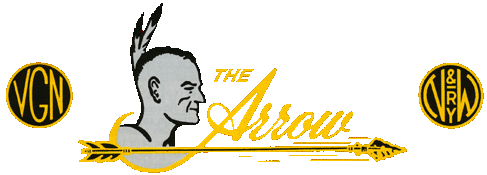| Wytheville, Virginia, Combination Station / History, Construction, and Modeling - Danial Fisher |
| |
Photo |
This view of the Wytheville station is from the street side and passenger
end of the station. It was taken shortly after the 1916 expansion. (Virginia Tech Image Base) |
| |
Photo |
This postcard view shows the town of Wytheville from the south. (Danial Fisher collection) |
| |
Photo |
This view shows the Wytheville station from the track side and freight
end after the 1916 expansion. Note the different shades in the brickwork
on the nearest bay. (N&WHS Archives collection) |
| |
Photo |
This postcard shows tthe Wytheville station looking west. (Danial Fisher collection) |
| |
Photo |
These two photographs show the freight end (above) and passenger end (below) of the Wytheville station in 1948 immediately before the modernization. Compare the freight end doors and windows with the photogrpah on pages 4 and 5. (Virginia Tech Image Base photos) |
| |
Photo |
This view shows the Wytheville station from the street side and passenger end of the station on June 1, 1949, after the modernization. (Virginia Tech Image Base) |
| |
Photo |
This view shows the Wytheville station from the track side and freight
end of the station on June 1, 1949, after the modernization. (Virginia Tech Image Base) |
| |
Photo |
The four views on this and the facing page show the interior of the
1949 station shortly after it was modernized. Interior photos of the
earlier station have not been located to date. (Virginia Tech Image Base) |
| |
Photo |
The two views at right show the west wall of the model in progress (above)
and completed (below). (Danial Fisher model and photos) |
| |
Photo |
The Wytheville station today is still in use. This photograph of it in its
current condition was taken in 2010. (Danial Fisher photo) |
| |
Drawing |
Four drawings of the station, both elevations and plan views. (Danial Fisher model and photos) |
| Rails Remembered - Chapter 77 / N&W Orders its First Diesels. Coal - and How it Was Moved. - Louis M. Newton |
| |
Photo |
Virginian train No. 3, handled by Class PA Pacific 215, was photographed
after arrival in Roanoke. The train consists of a Virginian head-end car and N&W Class Pj coach, sometime in 1955 or early 1956. (Bob’s Photo, N&WHS Archives collection) |
| |
Photo |
Virginian Class CH-4 coach 206, one of ten built by Pullman in 1921 and
used for many years in the company’s mainline passenger service. (Bob’s Photo, N&WHS Archives collection) |
| |
Photo |
N&W Class Pj coach is on the rear of Virginian Train 4 leaving Roanoke and just clearing the N&W crossing at Walnut Avenue (JK) Tower, sometime in 1955 or early 1956. The N&W train is waiting on the southward Winston-Salem District main track. (N&WHS Archives collection) |
| |
Timetable |
This advertisement promoted Virginian passenger service in the summer of 1955. Nos. 3 and 4 were scheduled to meet at Nutbush at 11:43am. (Louis M. Newton collection) |
| |
Photo |
This is the front and back cover of a booklet that listed coal and coke operations on the N&W, dated December 1, 1953. The location is not identified, but the tipple is of a typical and relatively large mine, with five loading tracks for various sizes of coal ranging from lump to slack.
Empties can be seen at right on delivery track. Cars moved by gravity through the loading tracks and onto the outlet tracks, out of sight at left. (N&WHS Archives collection) |
| |
Map |
This map of Norfolk & Western Coal Districts and Mines is dated December 1953. The map was periodically updated through the years. Each coal field and its associated mines are presented piece by
piece from this map on the pages that follow. (N&WHS Archives collection) |
| |
Map |
Kenova District coal fields. |
| |
Map |
Thacker District coal fields. |
| |
Map |
Tug River District coal fields.
Upper Buchanan District coal fields. |
| |
Map |
Clinch Valley No. 1 District coal fields. |
| |
Map |
Clinch Valley No. 2 District coal fields. |
| |
Map |
Pocahontas District coal fields. |
| |
Table |
1955 Mine Shifter Assignments. |
| |
Table |
Coal analyses from low-volatile Pocahontas District, including the famous
Pocahontas No. 3 seam, and highervolatile Thacker District. Coal for a specific use was marketed according to its various qualities as well as price. (N&W Coal and Coke Manual, November 1965) |

